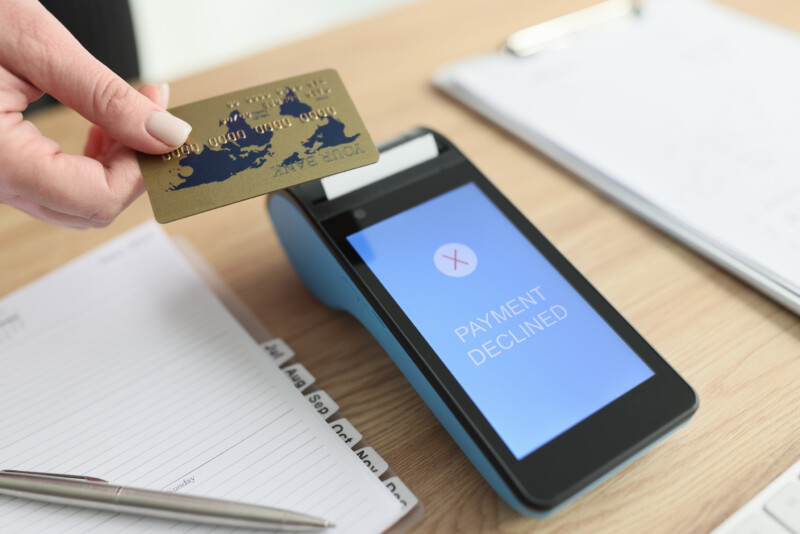Are you struggling under the weight of mounting debt? You’re not alone, and more importantly, there are innovative strategies that can help you pay off your debt faster than you might think. One effective method involves the snowball or avalanche approach, allowing you to tackle smaller debts first to build momentum or focus on high-interest debts to save money in the long run. These strategies have helped countless people regain financial control, myself included.
Another game-changing technique to consider is debt consolidation. By rolling your high-interest debts into a single monthly payment at a lower interest rate, you can simplify your finances and pay off your debt more quickly. I remember feeling overwhelmed by numerous credit card balances; consolidating them into manageable payments was a huge relief.
🌟 Top Picks for Online Earnings! 🌟
Dive into our handpicked selection of the best platforms to boost your online income. Trusted by thousands, these platforms are a must-try for anyone looking to make money online.
Turn your opinions into cash with one of the most reputable online survey platforms. Explore Survey Junkie
From watching videos to shopping online, Swagbucks rewards you for everyday online activities. Dive into Swagbucks
Get rewarded for shopping, taking surveys, and more. Check Out Lifepoints
Discover a curated list of remote and flexible jobs. Find Jobs on FlexJobs
Negotiation and compromise can also be key for those looking for creative solutions. Reaching your creditors to renegotiate terms can lead to much-needed breathing room. A friend cut her debt in half by simply asking for better terms and showing her commitment to repaying. Don’t underestimate the power of a good conversation and a solid plan.
Understanding Snowball Vs. Avalanche Methods

When tackling debt, you might encounter two popular strategies: the Debt Snowball and the Debt Avalanche methods. Each aims to help you pay off your debt but takes different approaches.
Debt Snowball Method
The Debt Snowball method is all about momentum. You start by paying off your smallest debt first while making the minimum payments on your other debts. Once the smallest debt is paid off, you use that payment amount to tackle the next smallest debt.
- Pros: Gives you quick wins and boosts your morale.
- Cons: Could cost more in interest over time.
For example, my friend Sarah started with a $500 credit card debt. Paying it off quickly gave her a confidence boost, which she then used to tackle her larger debts.
Debt Avalanche Method
The Debt Avalanche method, on the other hand, focuses on reducing interest payments. You start with the debt with the highest interest rate, regardless of the balance, and pay it off first.
- Pros: Saves money on interest.
- Cons: It takes longer to see smaller wins.
My neighbor Tom went this route. He had a high-interest payday loan that he tackled first. It took a while, but he saved a good chunk of money in interest.
Key Comparisons
| Feature | Debt Snowball | Debt Avalanche |
|---|---|---|
| Focus | Smallest balance first | Highest interest rate first |
| Psychological Impact | Quick small wins | Longer time to see progress |
| Financial Impact | Potentially higher interest | Lower overall interest paid |
So, which method is right for you? It depends on your personal preference and financial situation. Are you motivated by quick wins or long-term savings?
See Related: Turning Financial Mistakes into Profitable Lessons: How Recovering from a Bad Car Loan Led to Financial Literacy
Exploring Balance Transfer Credit Cards

Using balance transfer credit cards can be a game-changer in tackling high-interest debt. These cards typically offer 0% introductory APR for a set period, often between 12 to 18 months. This means you can halt the accumulation of interest for a while, giving you a breather to pay down the principal balance.
Imagine transferring your balance from a high-interest card to one without immediate interest. This move can save you significant interest fees, allowing you to pay off your debt more swiftly. But remember, balance transfer fees might apply, so watch for those.
A friend, Susan, once juggled multiple cards with high interest rates. She switched to a balance transfer card and wiped out a substantial portion of her debt within a year. She mentioned that the 0 percent APR period was a golden opportunity to get ahead.
Before committing to a balance transfer card, compare different ones. Look at the length of the promotional period and any associated fees. Here’s a quick comparison table to help:
| Card | Intro APR Period | Balance Transfer Fee |
|---|---|---|
| Card A | 15 months | 3% |
| Card B | 18 months | 2% |
| Card C | 12 months | 0% |
Using these criteria, find the card that suits your needs. Also, resist the temptation to rack up more debt on your old card after transferring the balance. Maintaining discipline is key.
You can reduce your debt faster by managing your financial discipline and utilizing balance transfer cards effectively. Seeing your principal balance shrinking without the drag of high interest rates can feel empowering.
Leveraging Gig Economy Jobs

The gig economy can be a game-changer when you’re looking to tackle debt. Gig jobs offer flexible work options to earn extra cash without committing to a full-time schedule. This can be particularly helpful when juggling a 9-to-5 job or other responsibilities.
Consider freelancing platforms like Upwork or Fiverr. These platforms let you use your existing skills—whether it’s writing, graphic design, or coding—to pick up short-term projects. It’s amazing how quickly those small gigs can add up.
Ride-sharing services such as Uber or Lyft are another great way to earn money. Imagine doing a few rides after work or during weekends. Not only do you get cash, but you meet interesting people, and it can break the monotony.
Delivery services like Instacart and DoorDash offer flexible hours and straightforward work. Whether you deliver groceries or takeout, you can make decent money while helping your community. Plus, you can do it when your schedule fits best.
I remember my friend Lisa, who was drowning in student loans. She started renting out her spare room on Airbnb, meeting travelers from all over, and paid off a significant chunk of her debt. It wasn’t just about the money but also an enjoyable and social way to meet new people.
Income-driven repayment plans have their place too. Particularly if you’re gigging sporadically, they can lower your monthly debt payments, making it easier to manage finances.
Leveraging the gig economy offers you flexibility, extra income, and the power to chip away at that debt. So why not give it a try? Get creative and look for gigs that fit your lifestyle.
See Related: Leveraging Unexpected Windfalls: 10 Unconventional Ways to Invest an $8K Windfall for Maximum Returns
Passive Income Streams To Supplement Repayment

Generating passive income can be a game-changer when tackling debt. Instead of solely relying on your primary source of income, you can leverage multiple revenue streams to ease your repayment journey.
Dividend Investing: By purchasing stocks that pay dividends, you’ll earn a share of the company’s profits. Imagine receiving quarterly payments just to hold onto a few robust stocks. It’s like planting a money tree that bears fruit every few months.
High-Interest Savings Accounts: You can park your savings in a high-interest account. This way, your money grows passively without you lifting a finger. The extra interest earned can go directly toward your debt.
Rental Properties: If you have some funds, investing in rental real estate can provide a steady income stream. A friend turned a fixer-upper into a cozy rental, and now it pays his mortgage and then some.
Peer-to-Peer Lending: Platforms like LendingClub let you lend money to individuals or small businesses. You earn interest on your loans, which can significantly boost your repayment funds. It’s like being the bank!
Creating a Blog: Yes, it’s a bit of work initially, but once it’s up and running, a blog can generate passive income through ads and affiliate marketing. My cousin runs a travel blog that now pays her car loan.
Sell Digital Products: Creating digital products, such as e-books, courses, or printables, can be a superb way to earn passive income. Your expertise on a topic could become someone else’s valuable resource.
Online Marketplaces: Selling items on eBay, Etsy, or even Amazon can help shed old stuff and earn some extra bucks. Plus, it’s quite satisfying when you turn clutter into cash.
Every extra dollar counts when you’re working your way out of debt. By diversifying your income streams, you can accelerate repayment and feel more financially secure.

Leave a Reply